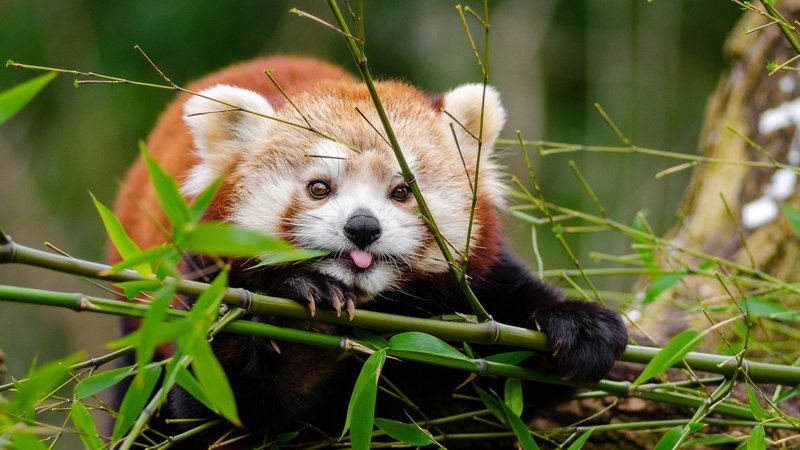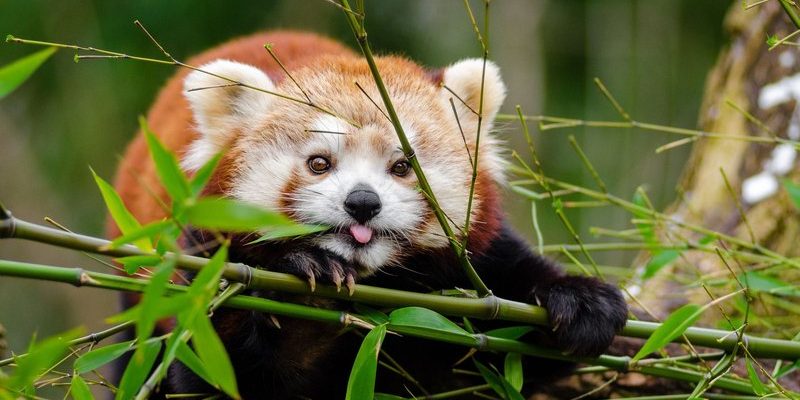
Imagine a place where temperatures can drop, snow blankets the ground, and food isn’t always easy to find. It might sound tough, but red pandas have adapted perfectly to these challenges. Just like how we bundle up with warm clothes and find shelter during a winter storm, red pandas have some fascinating adaptations that help them not only endure but thrive in those harsh environments. Let’s dive into how these cute animals manage to call such tough terrains home.
Physical Adaptations to Cold Weather
Red pandas are nature’s little survivalists, and their furry bodies have evolved to handle the chill. First off, they have an incredibly thick coat. If you’ve ever felt an animal’s fur, you know how insulating it can be. Their fur is not just soft; it’s designed to trap warmth and shield them from harsh winds and biting cold. The longer fur on their tails acts like a cozy blanket that they can wrap around themselves when temperatures drop.
Their paws also play a significant role in surviving the cold. Unlike many animals, red pandas have fur on the soles of their feet. This extra layer of insulation helps them walk on snow and ice without losing too much body heat. Imagine walking barefoot on cold pavement—it’s not fun! But these little guys can scamper around without a worry.
Moreover, red pandas have a unique way of keeping their body temperature in balance. They tend to be most active in the cooler parts of the day, like early morning and late afternoon. This means they’re less likely to overheat when the sun is blazing, and they can take advantage of cooler weather to search for food.
Dietary Preferences and Location
Now, you might be wondering, “What do red pandas eat in such a challenging environment?” The answer is simple: bamboo! While it might seem like a limited diet, they actually have a pretty good strategy. Bamboo is their primary food source, and it’s abundant in their habitat. These little creatures can eat up to 28 pounds of bamboo every day! That’s like a human munching on nearly 200 stalks of celery!
But here’s the catch—bamboo isn’t super nutritious. So, red pandas have to consume a lot of it to meet their energy needs. Their large, curved molars are perfect for crushing tough bamboo shoots. It’s like having the best blender in the animal kingdom! And if one type of bamboo becomes scarce, red pandas are smart enough to move to different areas to find more.
During the colder months, food can be harder to find. To cope, red pandas slow their metabolism, meaning they don’t need to eat as much. It’s like when we opt for lighter meals after a heavy holiday feast. This ability to adapt their eating habits helps them make it through tough times when food is limited.
Behavioral Adaptations for Safety
Surviving in the wild is not just about food and warmth; it’s also about staying safe from predators. Red pandas are experts at blending into their surroundings. Their reddish-brown fur helps them camouflage among the reddish-bark trees and green foliage of their habitat. This natural disguise makes it difficult for predators to spot them. They often stay high up in the trees, where they feel safest.
When red pandas sense danger, they don’t run away like many animals. Instead, they freeze in place, using their stealth to avoid detection. You might think of a kid hiding in a game of hide-and-seek—staying quiet and still is sometimes the best strategy. If they do have to escape, they are incredibly agile climbers and can quickly navigate through the treetops.
In addition to their physical adaptations, red pandas are also social creatures. They communicate with each other through a variety of vocalizations and scents. This social behavior helps them stay connected and alert to potential dangers. They might not throw big parties, but they do share information about where food is plentiful or where safe spots can be found.
Conservation Challenges in Harsh Environments
Despite their incredible adaptations, red pandas face many challenges in their harsh environments. The biggest threat? Habitat loss. As humans expand into their territory for agriculture and urban development, red pandas are losing their homes. It’s like if someone built a shopping mall in your backyard—suddenly, your safe space is gone.
Additionally, climate change is altering their habitat. As temperatures shift and weather patterns change, the bamboo they rely on is threatened. This can lead to food shortages, making survival even tougher. Honestly, it’s a scary situation for these adorable creatures. Conservation organizations are working hard to protect red pandas and their environments, but there’s still a long way to go.
The good news is that awareness is growing. More people are learning about red pandas and their unique needs. Initiatives like protected reserves and awareness campaigns are helping to make a difference. If you’re a fan of these fluffy cuties, supporting red panda conservation efforts can play a part in ensuring their survival.
The Role of Red Pandas in Their Ecosystem
Red pandas are not just cute faces in the wild; they play a vital role in their ecosystem. By munching on bamboo, they help control the growth of this plant, which can take over if left unchecked. This, in turn, helps maintain the balance of the forest environment. Think of them like gardeners, tending to their landscape as they snip away at the excess.
Moreover, as red pandas move through their habitat, they help spread seeds and create pathways for other animals. This contributes to biodiversity, which is essential for a healthy ecosystem. It’s like having a team of little park rangers keeping everything in check!
Their presence also attracts tourists and nature enthusiasts, contributing to conservation awareness and funding. Red pandas are a hit at zoos, drawing in crowds who want to learn more about their plight and how they can help. This interest can lead to more efforts to protect their natural habitats.
Future Prospects for Red Pandas
So, what does the future hold for red pandas in harsh environments? While the odds seem stacked against them, there’s still hope. Efforts to conserve their habitats are gaining momentum. Local communities are starting to adopt sustainable practices that can help protect the bamboo forests where red pandas live. Educating the public about the importance of protecting these adorable creatures can lead to positive change.
Additionally, breeding programs in zoos are working on increasing the population. These programs not only help maintain genetic diversity but also provide a safety net against extinction. Released into their natural habitats, these red pandas can help strengthen wild populations.
As more people join in the conservation efforts, we can all play a part in helping red pandas endure in their harsh homes. It’s a reminder that even the smallest, cutest creatures can have a significant impact on their ecosystems and our world.
In the end, red pandas show us that survival isn’t just about toughness; it’s about adaptability, community, and awareness. As we work together to support these precious animals, we can look forward to a future where they continue to thrive in their beautiful, rugged homes.
Ultimately, red pandas remind us that even in the harshest environments, there’s always a way to survive—and thrive.

